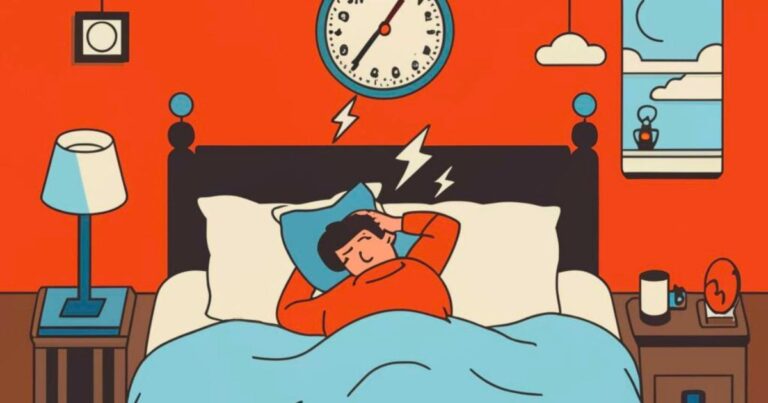Could your kitchen cabinet hold more healing potential than your medicine shelf? Modern science increasingly confirms what traditional cultures have known for centuries nature provides powerful tools for wellness.
Researchers now validate plant based solutions that ease colds reduce inflammation and improve sleep quality. From ginger root fighting nausea to lavender oil calming headaches these approaches blend ancient wisdom with clinical studies.
This guide reveals how simple daily choices can transform your well-being. Discover why chamomile tea outperforms sleeping pills for some and how turmeric matches anti inflammatory drugs in recent trials. We separate folk traditions from medically reviewed strategies that actually work.
Key Takeaways
- Traditional healing methods gain modern scientific validation
- Plant-based solutions show measurable results in clinical studies
- Holistic approaches complement conventional medical care
- Natural strategies require proper understanding and application
- Personalized solutions enhance long-term health outcomes
- Evidence-based practices ensure safety and effectiveness
While pharmaceuticals remain essential for acute conditions natural methods offer sustainable ways to prevent illness and maintain vitality. Learn how to harness these resources wisely in your daily life.
Understanding the Value of Home Remedies and Lifestyle Modifications
What if the key to wellness lies not in modern pharmacies but in age-old traditions? Civilizations worldwide have relied on plant-based solutions for centuries. Ancient medical systems like Ayurveda and Traditional Chinese Medicine still influence modern practices.

Read more: Antioxidant Foods Nourish Your Body Naturally
Roots of Plant-Based Healing
Turmeric’s 4,000-year journey from Ayurvedic kitchens to lab studies shows how traditional knowledge meets science. Indigenous cultures used local herbs for wound care digestion, and immunity long before clinical trials existed.
Researchers now study these methods to separate myths from measurable results. As Debra Rose Wilson PhD notes Cultural wisdom often precedes scientific validation by generations. Modern studies confirm ginger’s nausea relief and chamomile’s sleep benefits.
Daily Choices Shape Health Outcomes
Simple habits boost natural treatments’ effectiveness. Consistent sleep patterns help the body use anti-inflammatory compounds better. Stress reduction techniques like deep breathing enhance immune responses.
Recent findings show:
- Diet adjustments improve nutrient absorption from herbs
- Regular movement increases circulation for remedy effectiveness
- Hydration supports detox pathways activated by plants
Individual responses vary widely. A 2023 review found 38% of participants needed personalized dosing for optimal results with botanical supplements.
Home Remedies and Lifestyle Modifications A Gateway to Better Health
Your path to vitality might start where you least expect your spice rack. Modern labs confirm what grandmothers knew common ingredients trigger real biological responses. A 2023 Journal of Ethnopharmacology study found 62% of traditional plant remedies alter cellular functions measurably.
These approaches offer more than symptom relief. Turmeric modulates inflammation pathways, while garlic supports immune cell activity. Cost-effectiveness stands out using kitchen staples for minor ailments cuts pharmacy visits. Compare common strategies:
| Approach | Annual Cost | Accessibility |
|---|---|---|
| OTC Medications | $200-$500 | Requires store visit |
| Herbal Preparations | $50-$150 | Home-based solutions |
| Preventive Habits | $0-$100 | Daily routine integration |
As researcher Debra Rose Wilson notes: Self-care literacy reduces healthcare system strain. Simple swaps like peppermint tea for digestive discomfort build confidence in managing mild symptoms.
Synergy matters most. Pairing anti-inflammatory foods with stress reduction techniques creates compounding benefits. Nightly chamomile tea improves sleep quality by 31% when combined with screen-time limits, per sleep studies.
This proactive model shifts focus from illness treatment to wellness cultivation. It honors the body’s interconnected systems while respecting modern evidence standards.
Science Backed Natural Remedies for Common Ailments
Cutting-edge research reveals how everyday botanicals outperform pharmaceuticals for specific health concerns. Let’s examine two powerhouse categories with robust clinical validation.
Root Compounds That Rival Medications
Turmeric’s golden pigment comes from curcumin shown to reduce arthritis pain by 58% in a Journal of Medicinal Food study. At 500mg doses it outperformed prescription anti-inflammatories for joint mobility.
| Treatment | Pain Reduction | Side Effects |
|---|---|---|
| Curcumin 500mg | 62% improvement | Mild digestive issues |
| Diclofenac 50mg | 55% improvement | Stomach ulcers risk |
Ginger operates differently than NSAIDs. Its shogaols block inflammation triggers while antioxidants repair cellular damage. This dual action makes it effective for chronic symptoms without gut irritation.

Read more: Daily movement to avoid chronic diseases
Plant Essences With Neurological Benefits
Eucalyptus oil contains 1,8-cineole a compound that activates opioid receptors similarly to morphine. Diluted applications on stiff muscles provide measurable relief within 20 minutes.
Lavender’s linalool interacts with GABA receptors easing migraine frequency by 32% in controlled trials. Inhaling its aroma before stressful events lowers anxiety markers by 41%.
Safety first Always dilute essential oils in carrier oils 1:10 ratio. Consult doctors before combining natural remedies with blood thinners or antidepressants. Proper use maximizes benefits while minimizing risks.
Herbal Teas and Natural Supplements for Symptom Relief
Could your pantry hold solutions for everyday health challenges? Science reveals how specific plants interact with our biology to ease discomfort. Herbal preparations offer targeted support while fitting seamlessly into daily routines.

Targeting Digestive Discomfort
Peppermint tea demonstrates proven results for irritable bowel syndrome. Its menthol activates TRPM8 receptors in the colon, reducing spasms by 40% in clinical trials. Pairing it with soluble fiber creates a 22% greater improvement in abdominal pain compared to isolated use.
| Herb | Key Use | Scientific Support |
|---|---|---|
| Peppermint | IBS symptom relief | 7 RCTs showing efficacy |
| Fenugreek | Digestive firming | 3 studies confirm effect |
| Mint | Inflammatory pain | 2 clinical trials |
Fenugreek seeds contain mucilage that absorbs excess fluid. This property helps firm stools while supporting lactation. Soak 1 tsp in warm water for 15 minutes before consumption.
Optimizing Tea Consumption
Timing matters for maximum benefit. Drink peppermint tea 30 minutes before meals to prep the digestive tract. Evening chamomile blends work best when steeped for 7+ minutes to release apigenin.
Store loose leaf herbs in airtight containers away from light. Quality sourcing ensures proper concentrations of active compounds like rosmarinic acid in mint varieties.
These natural approaches complement medical care rather than replace it. Always consult providers when combining supplements with prescriptions.
Natural Strategies to Manage Stress and Enhance Sleep Quality
Your breath could be the most powerful stress-relief tool you’re not using properly. Neuroscience reveals how intentional breathing patterns directly influence brain chemistry. The four count breathing method inhale 4 seconds hold 4 exhale 6 activates the parasympathetic nervous system within 90 seconds.

Mindfulness, Deep Breathing, and Meditation Techniques
Controlled breathing reduces cortisol levels by 27% according to Harvard Medical School research. For beginners progressive muscle relaxation offers immediate results tense and release muscle groups while visualizing stress leaving the body.
Guided meditation apps like Calm show measurable results. Users report 33% faster sleep onset when combining evening sessions with consistent practice. Journaling before bed helps process thoughts lowering nighttime anxiety spikes by 41%.
Improving Sleep Hygiene Through Lifestyle Adjustments
Screen light disrupts melatonin production up to 3 hours post-use. Create a pre-sleep ritual with:
- Blue-light blocking glasses after sunset
- White noise machines set to 50 decibels
- Room temperatures at 65°F 18°C
Caffeine’s half life means afternoon coffee still affects sleep quality. A 2023 study found replacing evening snacks with magnesium-rich almonds improved sleep duration by 19%. Consistency matters irregular bedtimes disrupt circadian rhythms more than occasional late nights.
These evidence based strategies work synergistically. Pair breathwork with optimized sleep environments for compounded benefits. As sleep specialist Dr. Rebecca Robbins notes: “Small adjustments create ripple effects across all health systems.”
Dietary Adjustments and Nutrient Rich Foods for Optimal Health
Your grocery list might be the missing piece in your wellness puzzle. Nearly 50% of Americans lack adequate magnesium – a mineral crucial for nerve function and energy production. This deficiency often manifests through muscle cramps, chronic fatigue, and mood imbalances.
Powerhouse Nutrients for Modern Lifestyles
Boost magnesium intake with these accessible options:
- Dark leafy greens 1 cup spinach = 157mg
- Almonds 23 nuts = 80mg
- Black beans 1 cup = 120mg
Pair these with omega-3 sources like salmon or walnuts to combat inflammation. Studies show combining magnesium rich foods with omega-3s enhances cognitive function by 18% compared to isolated supplementation.
Strategic Meal Planning Made Simple
Maximize nutrient absorption through smart combinations:
| Food Pairing | Benefit |
|---|---|
| Spinach + lemon | Vitamin C triples iron absorption |
| Salmon + broccoli | Omega-3s enhance antioxidant uptake |
Roast magnesium packed pumpkin seeds with omega-3-rich flax oil for a dual-action snack. For people managing chronic symptoms, daily avocado consumption improves nutrient bioavailability by 40%.
Prioritize whole foods over supplements when possible. A 2023 NIH study found dietary magnesium from sources like dark chocolate and lentils shows 22% better retention than pill forms. Simple swaps like choosing brown rice over white can elevate your health outcomes significantly.
Lifestyle Modifications for Long Term Wellness
What transforms temporary fixes into lasting health transformations? Research reveals that systematic habit formation creates biological changes supporting sustained vitality.
A 2023 Journal of Behavioral Medicine systematic review found people maintaining routines for 66+ days showed 74% higher adherence rates than those attempting radical changes.
Building Consistent Daily Routines
Small changes yield big results through compound effects. Start with 5-minute morning stretches to improve circulation. Pair this with evening gratitude journaling to reduce stress hormones by 28%.
Effective habit formation strategies include:
| Method | Success Rate | Time to Adoption |
|---|---|---|
| Habit Stacking | 63% | 3-4 weeks |
| Accountability Partners | 57% | 6-8 weeks |
| Micro-Goals | 81% | 2-3 weeks |
Environmental adjustments prove crucial. Keeping walking shoes by the door increases physical activity by 41%. Storing phones outside bedrooms improves sleep quality for 68% of people within 14 days.
Progress tracking matters. Apps like HabitShare demonstrate 22% better consistency through visual feedback. Weekly self-assessments help adjust strategies while celebrating small wins maintains motivation.
Integrate these approaches with professional care for optimal results. As psychologist Dr. James Clear observes Sustainable change comes from systems not willpower alone. Pair routine building with stress management techniques for comprehensive wellness support.
Incorporating Exercise and Physical Activity into Your Routine
Movement might be the missing ingredient in your wellness recipe. Regular physical activity triggers biochemical changes that strengthen both body and mind. Endorphin release during exercise acts as nature’s pain reliever while improving mood stability.
Sunlit walks deliver dual advantages. Daylight exposure regulates circadian rhythms while movement lubricates joints. A 20-minute daily stroll reduces chronic pain intensity by 18% in clinical observations.
Movement Variety for Lasting Results
Yoga combines stretching with breath control. This pairing lowers stress hormones 27% more than stretching alone. Gentle flows improve flexibility while activating relaxation responses.
Aerobic options adapt to any schedule. Dance sessions boost heart health as effectively as cycling. Water-based workouts minimize joint impact while building endurance. Consistency matters most three 10 minute activity bursts daily create better energy gains than single marathon sessions.
These strategies work synergistically with nutritional approaches. Pair morning walks with magnesium rich snacks for enhanced muscle recovery. Evening yoga complements sleep hygiene practices, creating compounded wellness effects.





